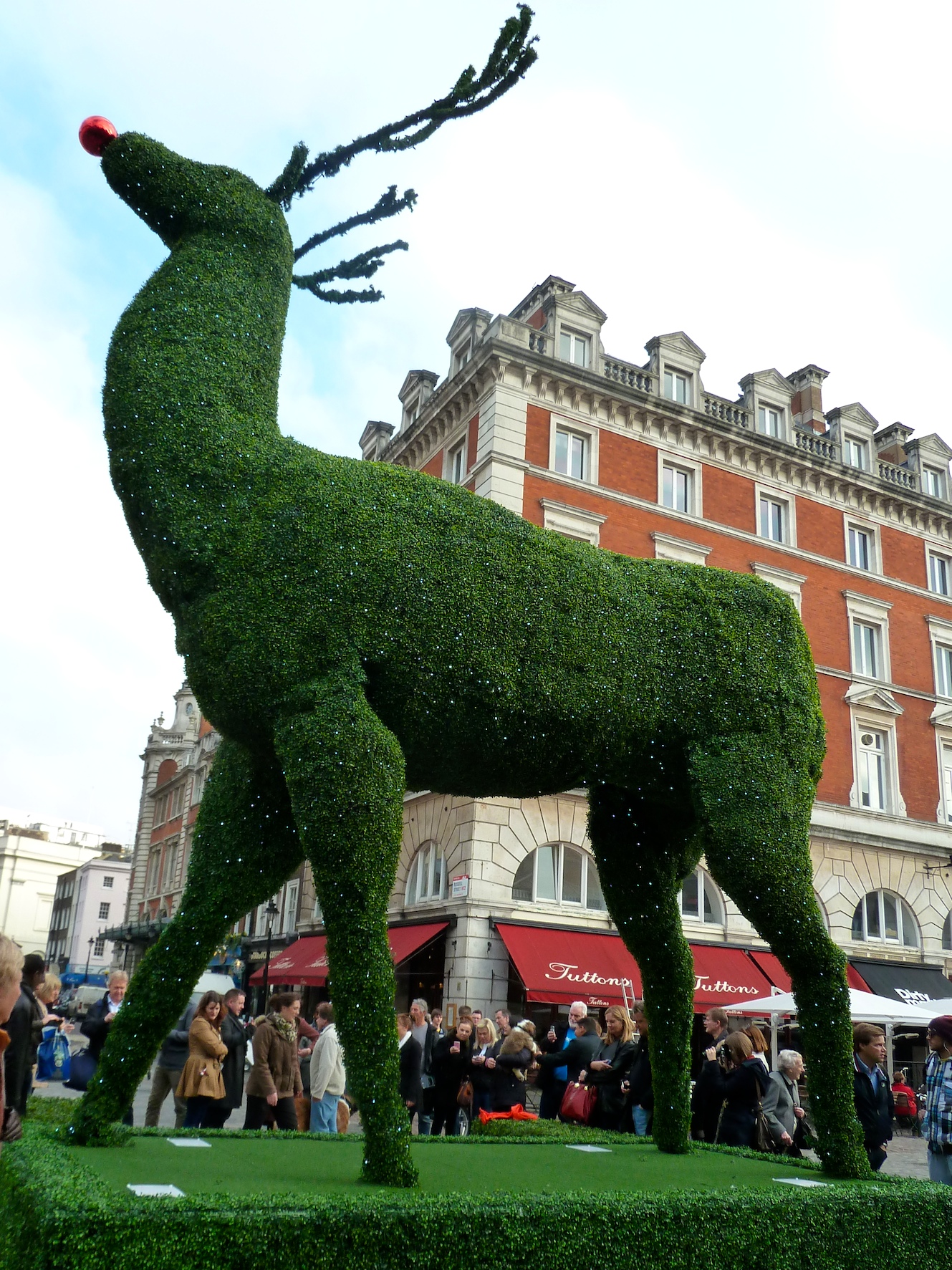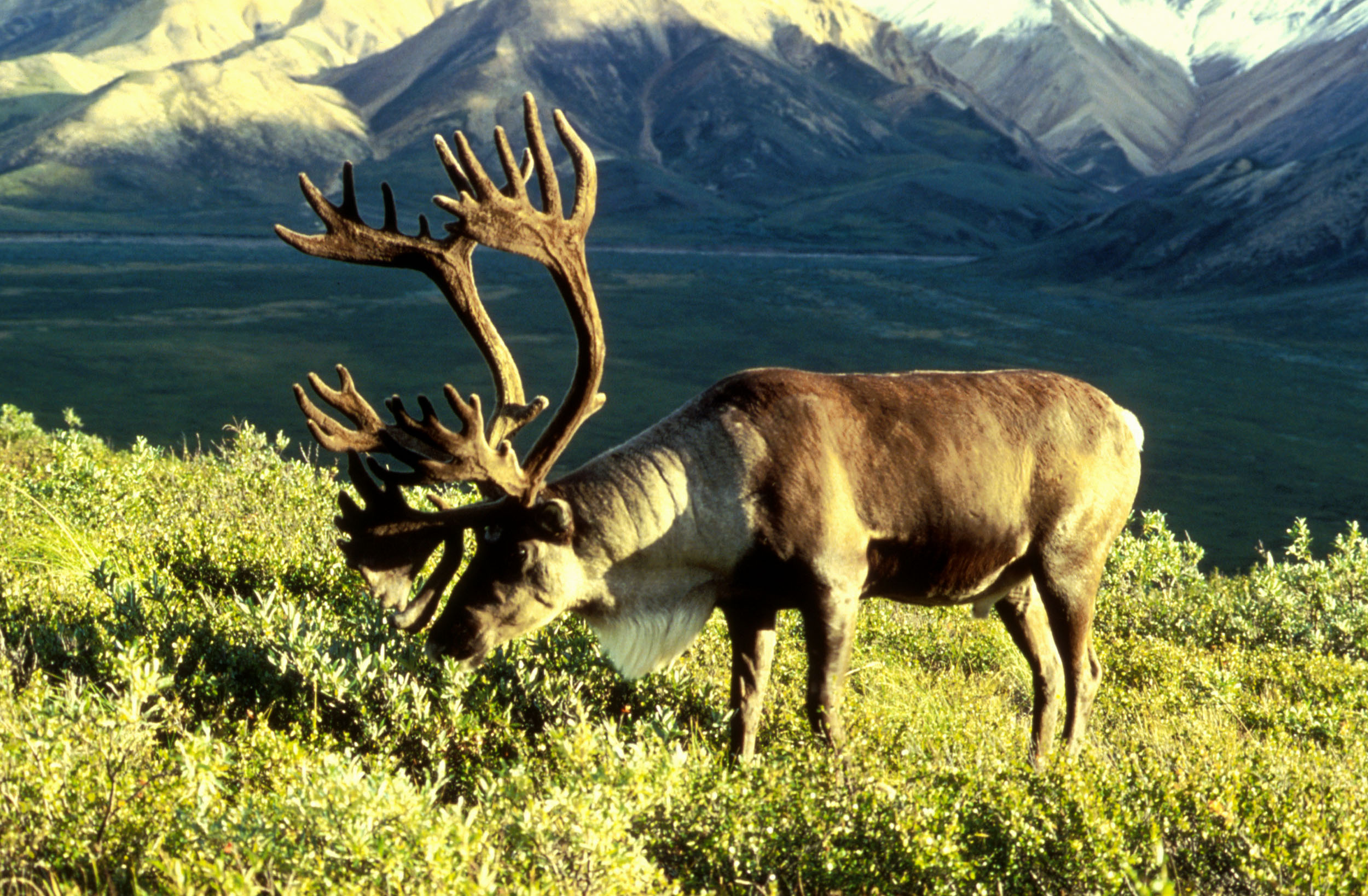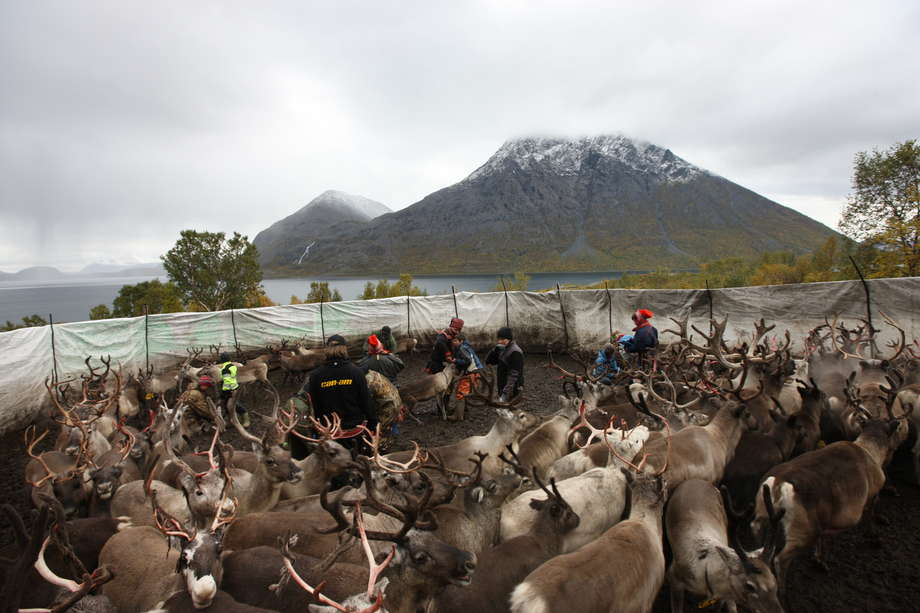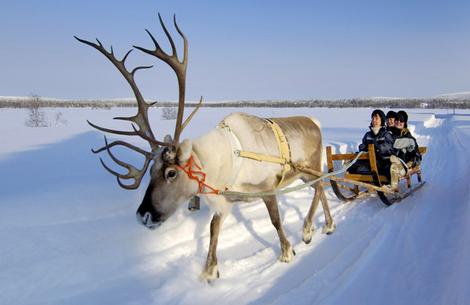You are currently browsing the tag archive for the ‘herd’ tag.
This week has been bitterly, horribly cold. The other day I was cooking a hearty winter stew of mutton, barley, leeks, and turnips. The kitchen was cold, so I put on the wool socks, sweater, and hat which my mother made me (my parents operate a fancy yarn store on Market Street in Parkersburg, West Virginia, which means I always have knitted goods made of the most gorgeous yarn). When I put on my woolens I was suddenly warm, and the smell of boiling mutton pervaded the whole house. It forcefully stuck me that I should devote a week to blogging about sheep (Ovis aries) in order to celebrate the many gifts of wool, milk, and meat which these gentle artiodactyls have given us over the years.
And the years are not few. I wrote before that goats were the first domestic farm animals, but there are some who argue, fairly convincingly, that sheep were domesticated first [our beloved friends the dog (who were once our feared enemies the wolves) were really first, by thousands–or even tens of thousands–of years, but dogs are hardly farm creatures]. Sheep were first domesticated somewhere between 11000 and 9000 BC in Mesopotamia. The animals are ideal for herding. They are large enough to be useful, but small enough to be manageable. Their highly social herd nature makes them tractable. It is not difficult to imagine hunter gatherers who followed mouflon herds around at first, and then held onto a few orphaned lambs…and then helped the sheep avoid other predators…and then led the flocks into greener pastures, until one day the relationship between the two groups of organisms was completely different. I am saying “sheep”, but there are actually a number of species in the Genus Ovis—different beautiful wild sheep from around the world. There are argali, urials, bighorn sheep, Dall sheep, and snow sheep. There were once others–now gone from Earth. But we are writing about mouflon (Ovis aries orientalis) and their domestic descendants, (Ovis aries aries).
Since they played such a large role in the origin of farming, sheep are deeply enmeshed in human culture and play a central role in many religions. The Abrahamic faiths were created by ancient herders and there is certainly a strain of sheepherders’ absolutism woven into monotheism! Cowherds are occasionally crushed, goatherds and swineherds despair of their charges’ willful intelligence, but shepherds have complete dominance. Christian literature in particular emphasizes sheepherding (Christ, the resurrected deity, often goes by sobriquets like “the lamb of god” and “the shepherd of men”). The lovely myths of Greco-Roman polytheism, ancient Egypt, and predynastic China are likewise filled with stories of the golden fleece, the supreme god Amun Re, and celestial rams.
Although more people worldwide have eaten goat meat, there are more sheep in existence and they are more important economically than their close cousins the goats. There are over a billion sheep on Earth belonging to upwards of 200 breeds. Each different breed was laboriously created by artificial selection across the long years to maximize meat, milk, hardiness, quick growth, tractability, or wool characteristics (or judicious combinations of these attributes). Just look at some of these breeds below. It is amazing they are the same animal, and yet they are obviously the same animal.

There are people who are very rich because of sheep. There are nations which depend on the wooly herds for their GDP. I have written much about sheep, but little about their milk, meat, and wool. Of these, perhaps sheep milk is least familiar to us in the industrialized west, since it is not easy to collect by mechanical means. Cheesemakers however still use it to make premium cheese. Some of the greatest and most delicious cheeses are sheep cheeses (sadly I have them infrequently, but they are indeed delicious. Sheep meat is known as lamb when it comes from young sheep and as mutton when it comes from older beasts. Prime cuts of lamb are more expensive than steaks–and arguably more delicious–but I like cooking mutton which can be boiled all day into soups and stews of surpassing flavor (although my urbane roommates sometimes wrinkle up their noses and look at me like I am a warlock dancing around a cauldron atop some ancient hill).
Sheep’s wool is the most common animal fiber in use. It is so familiar that it comes as a shock to read about its virtues with a fresh eye. Wool has a distinctive microscopic crimp which allows it to be spun into threads and yarns which do not unwind themselves (the sad fate of my otherwise excellent llama sweater). Wool can also be hammered or compressed–which causes microscopic barbs to attach to each other and form felt. It is an excellent insulator even when wet and it also absorbs sound. Wool is surprisingly fire resistant—much more so than other fibers. If it becomes hot enough to catch fire, wool does not melt or release toxic gases but forms a self-extinguishing char which still retains insulating properties. In airlines, where every other amenity has been removed or replaced, there are still wool carpets and dividers because of its excellence in fires (although no doubt right now some soul-eating MBA with a spreadsheet is working to make things less elegant and less safe). Wool is also extremely durable—although different varieties of wool last in different ways, and it can be dyed.
Of course to the jaded modern human, milk, amazing fiber, and meat are of little concern. Today’s city dwellers care even less about an animal’s docile nature or its ability to graze, reproduce, or stand off predators (which sheep do by forming together as a dense barrier wall!). Perhaps we are outgrowing sheep. However, they kept us alive for 10 hard millennia! As the arctic winds howl outside through Brooklyn’s empty streets and I sit at my computer in my wool socks and hat my eyes wearily trace to my bed where my little cat is curled up on the red trapper’s blanket. I certainly haven’t outgrown my dependence on sheep. Join Ferrebeekeeper in saluting our ovine friends during the coming week!
When I was a child, my best-loved emblem of the Christmas/holiday season was the reindeer (although, admittedly, I thought they were “rain deer”). My poor mother had to track down reindeer-themed decorations and jumpers all over the place. The magnificent antlered beasts were not just my favorite ornaments, but they were also the subjects of my most-preferred songs (in fact, I still find Rudolph’s ascendancy to personal empowerment through effulgent appendages and meteorological coincidence to be quite stirring). Yet reindeer are not just mythical creatures made up for the holidays—the true nature of these magnificent cold weather specialists is even more remarkable than folklore.
Reindeer (Rangifer tarandus) are large powerful cervids native to the trackless tundra of the Arctic and to the taiga and bogs of the subarctic (a vast habitat which encompasses most of Alaska,Canada, Siberia, and northern Europe). The North American subspecies of reindeer are commonly known as caribou. Although the migratory caribou are rangier (with thinner bodies and longer legs than old world reindeer), they are fundamentally the same creature. The caribou are the last animals in the Americas to still migrate across the wilderness en masse. The largest herds number in the hundred thousands (!) and evoke thoughts of the Pliocene or of the Serengeti (although like most other wildlife, the great herds are quickly declining).
Adult male reindeer weigh up to 180 kilograms (400 lbs) although a few exceptionally huge bucks have been measured weighing nearly twice that. The fur of reindeer has two layers: a layer of long hollow outer hairs and a down-like layer of dense fluff. The fur can be all sorts of shades of stippled and variegated brown, black, cream, and white. Both genders of reindeer grow antlers, and the antlers are the largest in proportion to body mass of any cervid.
Reindeer have many special traits to help them survive the rigorous conditions of their northern habitat. In summer their hooves become sponge-like and flatten out to give them traction on mud. In winter reindeer hooves harden into sharp wedges for cutting through ice and snow. Unlike white-tailed deer, reindeer can see into the indigo and ultraviolet spectrum. This ability helps them survive in the grey tundra and the great monochromatic boreal forests. Many things invisible in the (human) visible spectrum pop out in ultraviolet (most notably fur and urine).
Reindeer/caribou live predominantly on grasses, sedges, and tender tree shoots during the summer, but in winter their diet changes in accordance with the barrenness of their environment. During the long lean dark times of winter reindeer largely live on lichen. The reindeer are almost alone among animals in possessing the enzyme necessary to metabolize the tough lichen (only a handful of gastropod mollusks have been found to also produce lichenase).
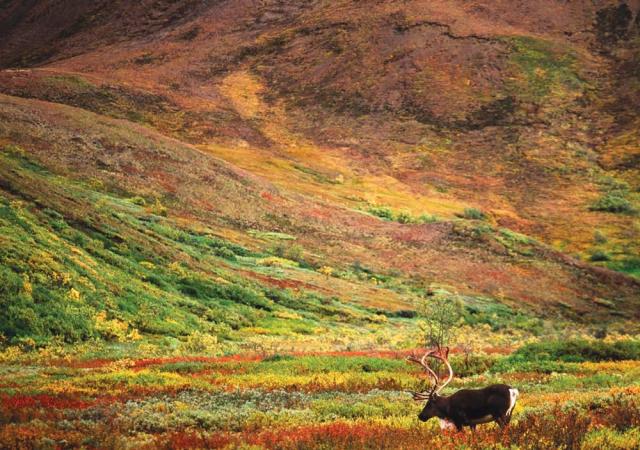 Young reindeer are hunted by golden eagles and wolverines. Mature adults are largely invulnerable to any animals other than polar bears, brown bears, and above all wolves. Wolves may be the ultimate predator of reindeer and certain packs live mutualistically with the reindeer herds and follow them all winter.
Young reindeer are hunted by golden eagles and wolverines. Mature adults are largely invulnerable to any animals other than polar bears, brown bears, and above all wolves. Wolves may be the ultimate predator of reindeer and certain packs live mutualistically with the reindeer herds and follow them all winter.
Humankind has a similarly ancient and intimate relationship with the reindeer and caribou. Since the depths of the ice age, human hunter-gatherers have stalked the great herds of deer. Some tribes began to follow the herds along their entire migratory routes and eventually the people and deer gradually became integrated. The domestication of animals began similarly with goats (ibexes), cows (aurochs), and pigs, but, in the case of reindeer, the process stalled in the middle. Certain herds of reindeer are semi-domesticated: but the herders follow the deer as much as the reverse. The reindeer provide skin, meat, milk, and transportation to the tough herding/hunting nomads of the north (mainly the Sami in the modern world). The herders protect the reindeer from wolves, bear, and hunters.
Although they are not perfectly domesticated (and would probably keep on with their ancient migrations if humankind all dropped dead or decided to emigrate to Alfa-Centauri), reindeer are docile, gentle, and extremely beautiful. They are a perfect emblem of the season (although Santa’s presumably male herd would shed their antlers before Christmas), but they are an even greater emblem of the last great wilds which can be found in the far north. I devoutly hope that the great changes of the Anthropocene do not reduce the reindeer and caribou herds to a fraction of what they are today. I guess I still love them as much as ever. Where is that sweater with reindeer on it and the old Rudolph record?
A knot garden is exactly what it sounds like–a formal garden laid out to resemble a decorative knot. The concept is known to date back to Elizabethan times and may be even more ancient. Renaissance knot gardens consisted of square compartments planted with different herbs and aromatic plants, however, as gardening developed, knot gardens took on more and more of the formal decorative elements of parterre gardens. Although today’s knot gardens are often based around boxwood parterres or other formally clipped topiary hedges, many knot gardens still have an herbal component as a reminder of Renaissance knot gardens (which were meant to have a culinary medicinal, and even magical purposes).
Here is a little gallery of various pretty knot gardens from around the world (although they mostly seem to be English).










